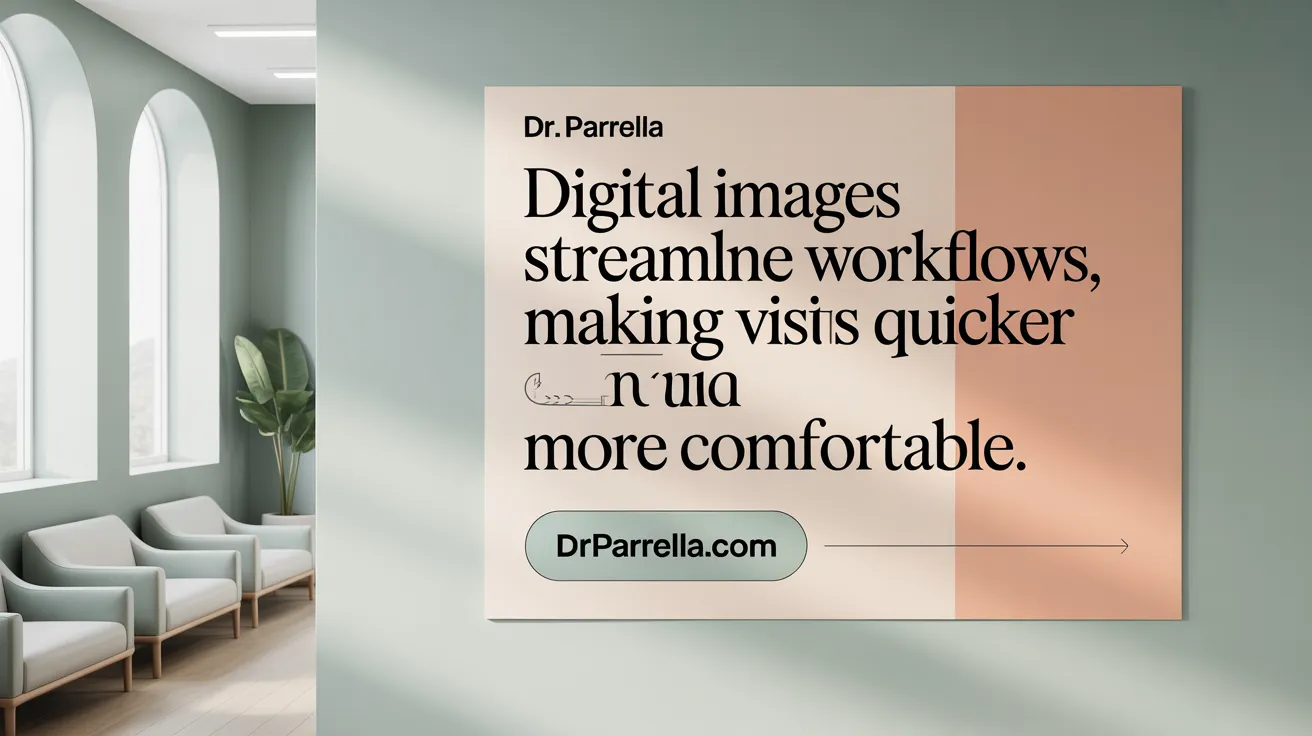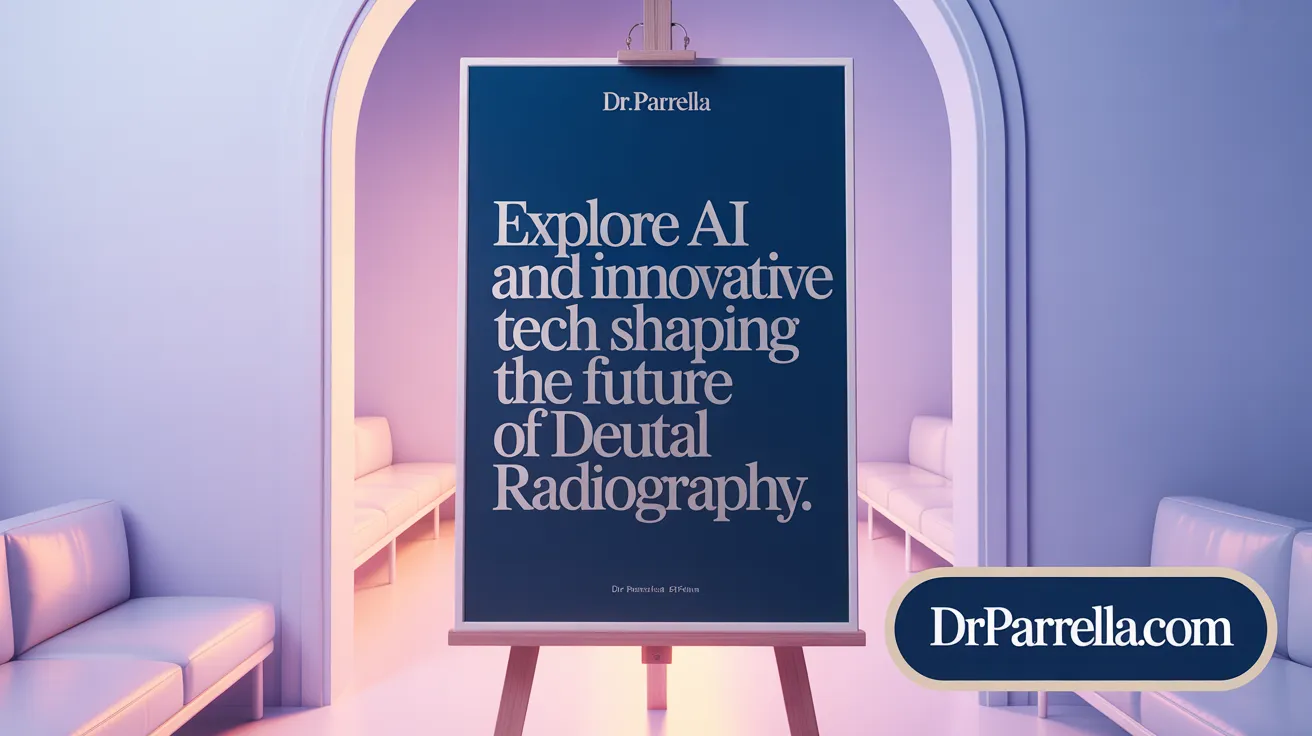Understanding the Shift in Dental Imaging
Dental diagnostics have entered a new era with the advent of digital X-ray technology, transforming patient care through safer, faster, and more accurate imaging. This article explores the key benefits and technological advancements that digital X-rays bring to modern dentistry, highlighting their impact on radiation safety, diagnostic precision, and clinical workflow.
What Makes Digital X-Rays Safer Than Traditional Methods?

How do digital X-rays reduce radiation exposure compared to traditional film-based X-rays?
Digital X-rays significantly reduce radiation exposure by using highly sensitive digital sensors sensitivity in radiography instead of traditional photographic film. These sensors require up to 80-90% less radiation to capture High resolution dental images. This efficiency means patients receive a much lower dose, particularly benefiting frequent imaging scenarios and sensitive groups like children and pregnant women. Unlike film, digital sensors can produce clear images with less radiation exposure with digital X-rays, enhancing overall patient safety.
What radiation safety measures are in place with digital dental X-rays?
Radiation safety in digital dental X-rays adheres to the ALARA radiation safety principles. This involves optimizing exposure through techniques like using faster digital sensors, rectangular collimation to narrow the X-ray beam, and selecting appropriate tube voltage settings. Although protective gear such as Lead Aprons and Thyroid Collars for Safety were traditionally used, updated guidelines from the ADA note that they may not be necessary since they can interfere with image quality, potentially causing retakes that increase radiation exposure. Instead, proper equipment calibration, operator expertise, and precise patient positioning serve as primary safety safeguards.
How do digital sensors and dose optimization contribute to safer X-rays?
Digital sensors are more sensitive to X-ray photons than film, enabling the capture of diagnostic images at lower radiation doses. Additionally, digital radiography systems allow for adjustments in image contrast and brightness after acquisition, further reducing the need for repeat exposures. This digital sensors sensitivity in radiography not only decreases patient radiation but also improves image quality, supporting better diagnostics with minimal risk.
Overall, digital X-ray technology combined with refined radiation safety protocols results in safer dental imaging by substantially reducing radiation dosage while maintaining or improving diagnostic accuracy.
Faster Results and Enhanced Patient Experience

How do digital X-rays improve the speed of dental imaging?
Digital X-rays revolutionize dental imaging by providing instantaneous images on a computer screen. Unlike traditional film X-rays, which require time-consuming chemical development, digital X-rays display high-resolution images within seconds. This immediate availability accelerates diagnosis and treatment planning, enabling dentists to discuss findings with patients during the same appointment. Such prompt imaging reduces overall appointment durations, making dental visits more efficient and convenient.
In what ways do digital images facilitate dental care coordination?
Digital X-ray images are stored electronically, simplifying retrieval and long-term record keeping. These images can easily be shared with other dental specialists, healthcare providers, or insurance companies via secure digital transfer. This seamless sharing enhances interdisciplinary collaboration, facilitates second opinions, and supports comprehensive care coordination. Patients also benefit through better understanding of their conditions, as images can be magnified or adjusted on screen in real time.
Digital imaging contributes to improved workflow within dental practices by minimizing delays associated with film processing and physical storage. Staff can focus more on patient care instead of administrative tasks related to image handling. The overall effect is a smoother diagnostic process, reduced need for retakes due to immediate image verification, and faster initiation of necessary treatments.
These advantages of digital X-rays—instant image capture, ease of sharing, and reduced appointment time—not only support better clinical outcomes but also elevate the patient experience by streamlining checkups and reducing wait times.
Why Are Digital X-Rays More Accurate and Diagnostic?
How do digital X-rays enhance diagnostic accuracy compared to traditional film?
Digital X-rays produce high-resolution images with exceptional detail that surpass traditional film X-rays. These images can be magnified, and their contrast and brightness adjusted, allowing dentists to uncover subtle problems more effectively. This enhanced clarity aids in the early detection of hidden dental issues such as small cavities, bone infections, gum disease, cysts, and tumors that might otherwise go unnoticed using conventional film methods.
What advanced imaging technologies complement digital X-rays for complex dental cases?
For more complex dental situations, Cone Beam Computed Tomography (CBCT) offers three-dimensional images of the teeth, jaws, and surrounding anatomical structures. This 3D imaging facilitates precise evaluation of bone density and anatomical details, proving invaluable in procedures like dental implant placement, orthodontic assessments, root canal treatments, and oral surgeries. Notably, CBCT emits less radiation than traditional computed tomography, making it a safer option for detailed diagnostics.
The combination of high-resolution digital images with the advanced capabilities of 3D imaging technology in dentistry significantly improves diagnostic accuracy, patient safety, and treatment planning efficiency in modern dentistry.
Types and Applications of Digital Dental X-Rays
What types of digital dental X-rays are commonly used and for what purposes?
Digital dental X-rays fall mainly into two categories: intraoral and extraoral imaging.
Intraoral X-rays are taken inside the mouth and include:
- Bitewing X-rays: Primarily used to detect cavities between teeth and track bone levels related to gum disease.
- Periapical X-rays: Show the entire tooth from crown to root and surrounding bone, crucial for assessing root health, bone infections, and abscesses.
- Occlusal X-rays: Capture the roof or floor of the mouth and are useful for detecting developmental anomalies, jaw fractures, or cysts.
Extraoral X-rays are taken outside the mouth, providing broader views:
- Panoramic X-rays: Offer a 2D overview of all teeth, jaws, and surrounding structures, helpful in detecting impacted teeth, jaw disorders, cysts, and planning surgical procedures.
- Cephalometric X-rays: Mainly used in orthodontics to analyze skull and jaw relationships for treatment planning.
- Cone Beam Computed Tomography (CBCT): Provides highly detailed 3D images, aiding complex procedures like dental implants, root canals, and evaluation of temporomandibular joints.
How do digital X-rays assist in treatment planning?
Digital X-rays deliver high-resolution, instantly available images that improve diagnostic accuracy. Enhanced image clarity allows dentists to detect small cavities, bone loss, infections, and abnormal growths early.
These detailed images enable precise visualization of tooth roots and surrounding bone, crucial for planning restorative treatments such as fillings, root canals, and dental implants. The 3D capabilities of CBCT especially enhance surgical planning by revealing bone density and anatomical complexities.
Rapid access to images shortens appointment times and facilitates timely discussions with patients about treatment options. Moreover, electronic storage and sharing options promote collaboration with specialists.
In summary, digital dental X-rays are indispensable tools for accurate diagnosis, effective treatment planning, and monitoring oral health over time.
Environmental and Operational Benefits of Digital Radiography
How does digital radiography benefit the environment compared to traditional methods?
Digital radiography eliminates the chemical processing needed for traditional X-ray films, which involves potentially harmful developers and fixing agents. This means that digital X-rays produce no toxic chemical waste, substantially reducing environmental pollution. Moreover, by dispensing with physical film, digital imaging decreases the consumption of materials and results in less physical waste overall. This shift to digital technology offers an eco-friendlier approach to dental imaging.
What are the operational advantages and challenges when transitioning to digital X-rays?
The adoption of digital X-ray systems enhances operational workflow by enabling instantaneous image acquisition and easy electronic storage and sharing, which shortens patient appointment times and streamlines diagnostics. While initial investment and maintenance costs for digital equipment may be higher than traditional film systems, the training required for dental staff is generally straightforward. Well-conducted training plays a critical role in minimizing image retakes and maintaining high-quality imaging standards. Ultimately, the improved efficiency and diagnostic accuracy offered by digital radiography can outweigh these challenges, leading to overall resource savings and improved patient care.
The Future of Dental Imaging: Integration of Advanced Technologies

How is artificial intelligence (AI) enhancing digital dental X-ray diagnostics?
Artificial intelligence is revolutionizing dental imaging by analyzing AI diagnostics in dental radiography instantly to detect conditions such as caries and bone loss more accurately than traditional methods. AI platforms not only highlight abnormalities but also provide objective insights, thereby boosting dentists' confidence in diagnosis. These tools also enhance patient communication by visually demonstrating findings and supporting tailored treatment planning.
What technological trends are shaping the future of dental radiography?
Several advancements are transforming dental imaging. Cloud-based storage enables easy remote access and sharing of digital X-rays, facilitating tele-dentistry and improved collaboration across healthcare providers. Mobile digital X-ray units equipped with wireless sensors offer portability and greater convenience, allowing imaging directly at the patient’s chair or in remote locations. Enhanced diagnostic tools, such as digital subtraction radiography, allow precise monitoring of changes over time, aiding in early detection and management of oral diseases.
These innovations contribute to safer, faster, and more accurate dental exams while streamlining clinical workflows and improving patient outcomes.
Embracing Digital X-Rays for Better Dental Care
Digital X-rays represent a pivotal advancement in dental diagnostics, offering remarkable improvements in safety, speed, and accuracy over traditional film methods. By substantially reducing radiation exposure, delivering instant, high-quality images, and enabling enhanced diagnostic capabilities, digital radiography fosters better patient outcomes and streamlined clinical workflows. The integration of emerging technologies like AI and 3D imaging further elevates dental care standards. As awareness grows about these benefits, digital X-rays continue to set new benchmarks for safer, faster, and more precise dental imaging worldwide.
